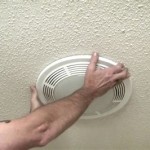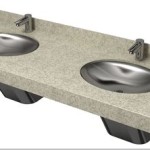How To Fix a Stopper In a Bathroom Sink
A malfunctioning stopper in a bathroom sink is a common plumbing issue that can lead to frustration and inconvenience. A stopper that is stuck in the open or closed position can hinder normal sink use, potentially leading to water wastage or a build-up of unsanitary conditions. Understanding the mechanism of a bathroom sink stopper and the common problems that can arise is crucial in performing effective repairs. This article provides a detailed guide on diagnosing and addressing issues with a bathroom sink stopper, enabling individuals to restore their sink to proper functionality.
Before embarking on any repair work, it is essential to understand the basic components of a bathroom sink stopper system. The system typically consists of the stopper itself, a lift rod, a pivot rod, and a spring clip. The stopper sits inside the drain opening and is connected to the pivot rod, which is located beneath the sink within the tailpiece. The lift rod, positioned above the sink, is connected to the pivot rod, allowing for the raising and lowering of the stopper. The spring clip secures the pivot rod to the lift rod mechanism. When the lift rod is pulled up, it rotates the pivot rod, which in turn lifts the stopper, allowing water to drain. Conversely, when the lift rod is pushed down, the pivot rod rotates in the opposite direction, lowering the stopper and preventing water from draining. This relatively simple system can experience various issues that prevent the stopper from functioning correctly.
Identifying Common Stopper Problems
The first step in fixing a malfunctioning stopper is to accurately diagnose the problem. Several issues can cause a stopper to stick or fail to operate properly. These issues include a disconnected lift rod, a misaligned pivot rod, debris accumulation, corrosion, or a damaged stopper.
A disconnected lift rod is one of the most frequent culprits. The connection between the lift rod and the pivot rod is often secured by a small screw or clip. If this connection becomes loose or detached, the lift rod will not be able to actuate the pivot rod, rendering the stopper inoperable. This can occur due to normal wear and tear or accidental bumps to the lift rod assembly.
Misalignment of the pivot rod can also impede the stopper’s function. Over time, the pivot rod can shift out of its correct position, preventing it from properly engaging with the stopper. This can result in the stopper being unable to fully close or open, leading to slow drainage or a consistently blocked drain.
Debris accumulation within the drain and around the stopper is another common cause of problems. Hair, soap scum, and other materials can collect around the stopper and pivot rod, obstructing their movement. This accumulation not only restricts the stopper’s movement but can also contribute to unpleasant odors emanating from the drain.
Corrosion can also affect the stopper mechanism, especially in older sinks. The metal components of the stopper system, such as the pivot rod and stopper itself, can corrode over time due to prolonged exposure to water and chemicals. This corrosion can cause the parts to seize up or weaken, leading to breakage and malfunction.
Finally, the stopper itself can become damaged. Cracks, chips, or warping of the stopper can prevent it from creating a tight seal, leading to a leaky drain. In some cases, the stopper may become completely detached from the pivot rod, rendering it useless.
Steps to Fix a Stopper Stuck in the Down Position
When a stopper is stuck in the down position, preventing water from draining, several troubleshooting steps can be taken. These steps range from simple adjustments to more involved disassembly and cleaning. A systematic approach will help efficiently identify and resolve the issue.
The initial step is to attempt to manually lift the stopper. This can sometimes dislodge any minor obstructions and allow the water to drain. If the stopper is difficult to grasp, a pair of pliers can be used, exercising caution to avoid damaging the stopper's surface. Gently wiggle the stopper while attempting to lift it.
If manual lifting fails, inspect the lift rod connection. Locate the pivot rod beneath the sink and check the connection between the lift rod and the pivot rod. Ensure that the screw or clip securing the connection is tight and that the lift rod is properly seated in the pivot rod mechanism. If the connection is loose, tighten the screw or reattach the clip. Test the lift rod to see if it now moves the pivot rod.
If the lift rod connection is secure, the next step is to check for debris accumulation. Use a flashlight to inspect the drain opening and the area around the stopper. If visible debris is present, attempt to remove it with long tweezers or a bent wire. A straightened coat hanger can be particularly useful for reaching down into the drain and dislodging stubborn debris.
If removing visible debris does not resolve the issue, it may be necessary to disassemble the stopper mechanism. Place a bucket under the sink to catch any water. Carefully loosen the nut connecting the tailpiece to the drainpipe. Once the nut is loosened, the tailpiece can be gently lowered, exposing the pivot rod. Remove the pivot rod from the tailpiece and thoroughly clean it, removing any accumulated debris or corrosion. Also, inspect the inside of the tailpiece for any blockages.
With the pivot rod removed, the stopper can usually be accessed from above. Use pliers or tweezers to carefully remove the stopper from the drain. Clean the stopper thoroughly, removing any hair, soap scum, or other debris. Inspect the stopper for any signs of damage, such as cracks or warping. If the stopper is damaged, it may need to be replaced.
After cleaning all the components, reassemble the stopper mechanism. Insert the stopper back into the drain, ensuring that it is properly aligned with the pivot rod opening. Reinsert the pivot rod into the tailpiece, making sure it engages with the stopper. Reattach the lift rod to the pivot rod and tighten the screw or clip. Reconnect the tailpiece to the drainpipe and tighten the nut. Test the lift rod to ensure that the stopper now moves freely and seals properly when closed. If the stopper still does not function correctly, double-check all connections and ensure that all components are properly aligned.
Steps to Fix a Stopper Stuck in the Up Position
A stopper stuck in the up position, while allowing water to drain, prevents the sink from holding water. Addressing this issue requires slightly different troubleshooting steps compared to a stopper stuck in the down position. The focus will be on ensuring proper engagement of the stopper and pivot rod, and that the lift rod is correctly positioned.
Begin by inspecting the lift rod adjustment. If the lift rod is adjusted too high, it can prevent the stopper from fully descending and sealing the drain. Locate the screw on the lift rod that controls its height. Loosen the screw and lower the lift rod slightly. Test the stopper to see if it now closes properly. Repeat this adjustment until the stopper is able to seal the drain effectively.
If adjusting the lift rod does not resolve the issue, check the pivot rod position. The pivot rod may be misaligned, preventing it from fully rotating and lowering the stopper. Disconnect the lift rod from the pivot rod. Manually rotate the pivot rod to see if the stopper moves freely. If the pivot rod is difficult to rotate, it may be obstructed by debris or corrosion. Clean the pivot rod and the surrounding area thoroughly.
In cases where the stopper is stuck due to debris accumulation, follow the same cleaning procedures as described for a stopper stuck in the down position. Remove the stopper and pivot rod, and thoroughly clean them. Pay particular attention to the area where the stopper seals against the drain opening, ensuring that there are no obstructions that prevent a tight seal.
If the stopper has become detached from the pivot rod, it will need to be reattached. This typically involves aligning the stopper with the pivot rod opening and securing it with a screw or clip. Ensure that the stopper is securely attached and that it moves freely with the pivot rod. Test the stopper by manually operating the pivot rod to ensure that it raises and lowers smoothly.
In situations where corrosion is the culprit, it may be necessary to replace the affected components. Corroded pivot rods or stoppers will not function effectively and can lead to further problems. Purchase replacement parts from a hardware store and install them according to the manufacturer's instructions. Ensure that the replacement parts are compatible with the existing sink and drain system.
After completing any repairs or replacements, reassemble the stopper mechanism and test its operation. Ensure that the lift rod is properly adjusted, the pivot rod is securely connected, and the stopper seals tightly when closed. Run water into the sink and check for any leaks around the drain. If leaks are present, tighten the connections and re-evaluate the seal of the stopper.
By systematically addressing these potential issues, individuals can effectively diagnose and resolve problems with bathroom sink stoppers stuck in either the up or down position. Proper maintenance and periodic cleaning can help prevent future issues and extend the lifespan of the stopper mechanism.

Quick Tip 26 Pop Up Stopper Sticks Misterfix It Com

How To Replace A Sink Stopper Quick And Simple Home Repair

Fixing Tricky Pop Up Drain Sink Stopper Mechanisms Efficient Plumber
Install A Drain Stopper So The Is Removable

How To Fix A Bathroom Sink Stopper Step By Guide London Post

How To Fix Or Maintain Your Sink S Pop Up Mechanism

How To Replace Or Maintain A Sink Pop Up Drain Assembly

Complete Guide Fixing A Sink Stopper Step By Instructions
How To Unclog A Bathroom Sink Larry Sons

How To Remove A Bathroom Sink Stopper Take Out Pop Up Drain From
Related Posts







